Social Security registered 21,198,679 contributors in August, discounting seasonality and the calendar effect. This represents an increase of 355,743 employed people so far this year, and 480,516 compared to the same month in 2023. There has now been 52 months of uninterrupted growth in employment in this series, after adding 30,189 more registered workers this month.
In seasonally adjusted terms, the figure for total contributors has increased by 1.84 million since before the pandemic.

In August, the average total contributor figure (original series) remained close to 21.2 million (21,189,402), 482,902 more than a year ago (+2.3%). This is 193,704 fewer employed people than a month ago, 0.91% less, which is in line with other August months and somewhat better than the August months prior to the pandemic.
In the month-on-month comparison, several sectors lost contributors due to the end of the season, while on the positive side, the following stand out: Health and Social Services Activities, with 17,012 more contributors (+0.87%); followed by Accommodation, with 2,172 more.
In year-on-year terms, most sectors are gaining members. The growth in Education is noteworthy, with 130,383 more contributors (14.5%). Meanwhile, Health Care and Social Services, with 73,562 employed people (+3.9%); Hotels and Restaurants, with 59,207 (+3.75%), and Trade, with 50,923 (+1.96%), also increased in the last year.
The daily series has surpassed 21.2 million members for five days this month.
The Minister for Inclusion, Social Security and Migration, Elma Saiz, explains: "We have consolidated 21.1 million workers, and we are very close to 21.2 million, in a month with a strong seasonal component. Moreover, it is noteworthy that the presence of foreign contributors is one of the driving forces of our labour market.
Over the last decade, employment of foreigners has grown faster than that of nationals. Specifically, between January and August of this year, the figure for foreign contributors grew by 6 points more than the overall percentage growth. In August, contributors from other countries accounted for 13.4% of the total. Among the activities that have experienced above-average gains in the share of foreigners, some high value-added activities such as Information and Communications, Construction, and Hotels and Restaurants stand out.
Higher employment growth than other major European economies
Moreover, job creation compared to pre-pandemic levels in Spain (+9.4%) outpaced that of the major European countries (France, +5.1%, Italy +3.8% and Germany, +1.7%). These countries have experienced greater dynamism since the beginning of the war in Ukraine. In Spain, job creation grew by 7.5%, compared to 4.8% in Italy, 2.2% in France and 1.9% in Germany.
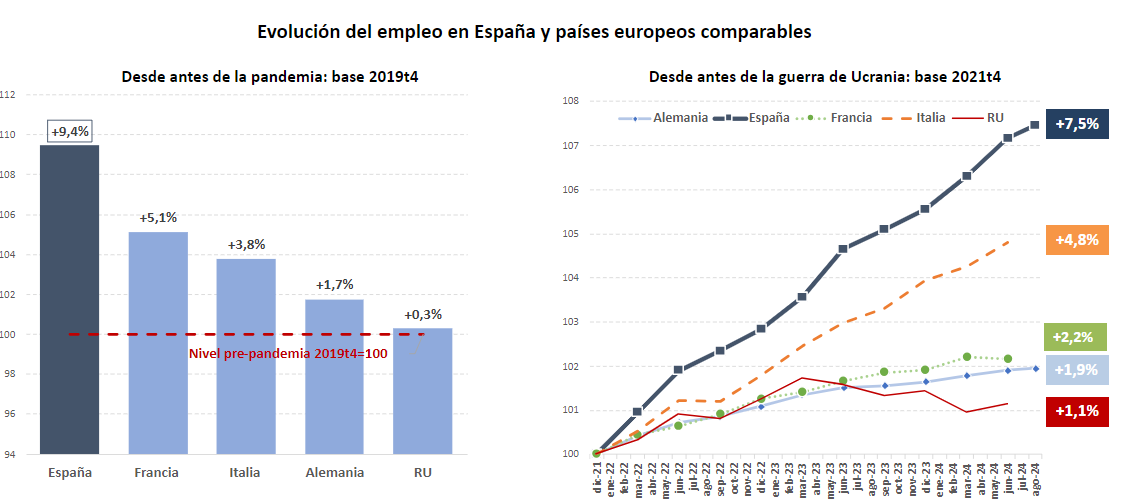
Women members
In August, an average of 9.95 million women were employed. Female contributors represent 47% of the total number of employed people.
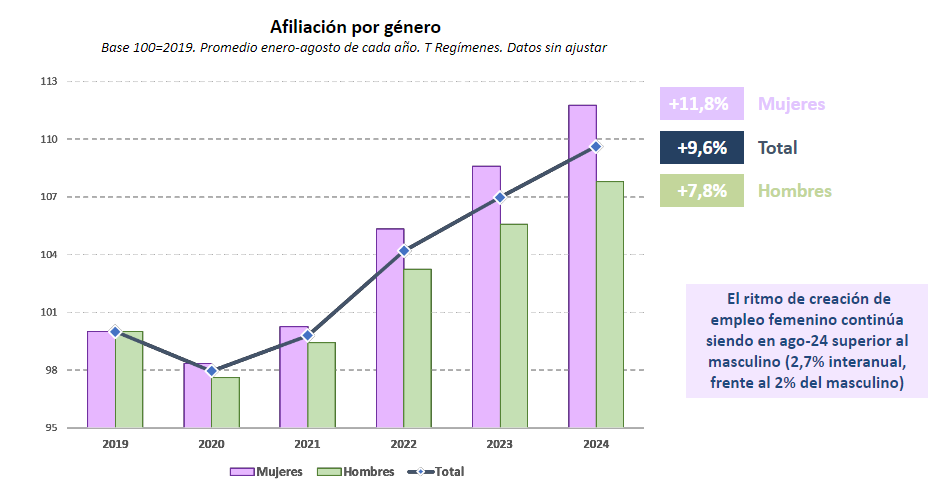
Female employment growth is 11.8% since the year before the pandemic and is four percentage points higher than the 7.8% increase among men. In year-on-year terms, the figure for women contributors is also outpacing that of male contributors: 2.7%, compared to 2% for men.
The favourable evolution of women's employment since 2019 has been accompanied by an improvement in their contribution bases, which show a growth of 20.9%, compared to 17.7% for men.
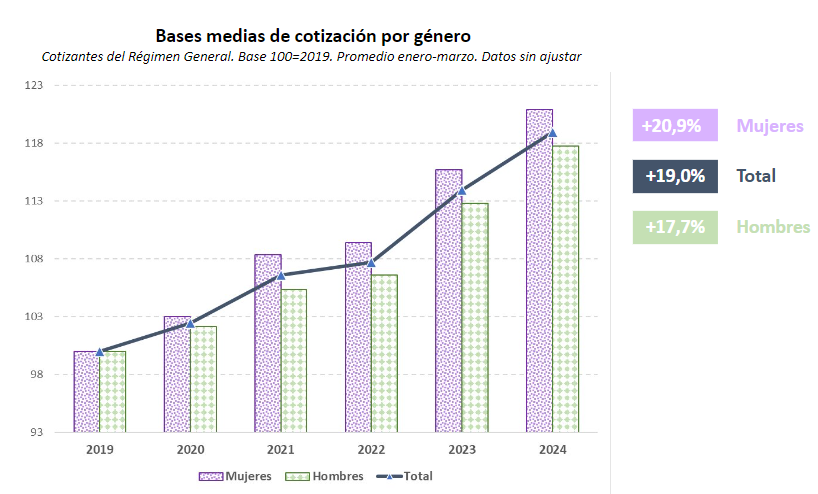
Meanwhile, youth employment has also experienced above-average dynamism, with an increase of 15.6% since 2019, 6 points higher than the overall percentage increase of 9.6%, and 17.9% since the implementation of the labour reform, almost double the overall increase.
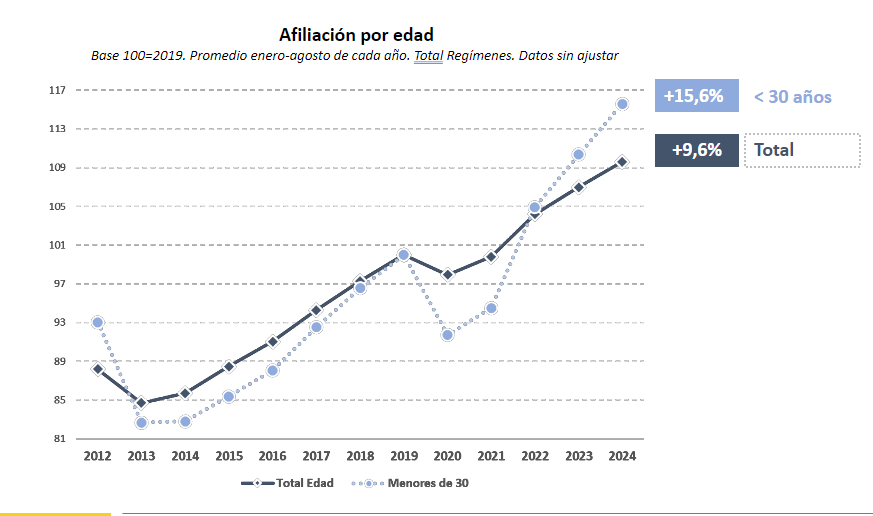
High value-added occupations
The increased contributor figures compared to the pre-pandemic level is particularly strong in high value-added sectors, such as Information and Communication and Professional, Scientific and Technical Activities. These activities also showed significant growth in the first half of 2024, with increases of around 4%, compared to the national average of 2.8%.
Greater stability: almost 3.4 million workers with permanent contracts since the labour reform was passed
There are currently more than 14.3 million people in employment with permanent contracts, of whom more than 9.6 million work full-time. This represents nearly 3.4 million more contributors (3,361,836) with permanent contracts since the approval of the labour reform (+30.5%).
In the last year, the number of permanent full-time contracts has grown more sharply (356,397 more) than part-time contracts (89,423 more), while the number of permanent temporary contracts has fallen (14,472 fewer). This means that 64% of the new Social Security contributors with permanent contracts in the last year are full-time.
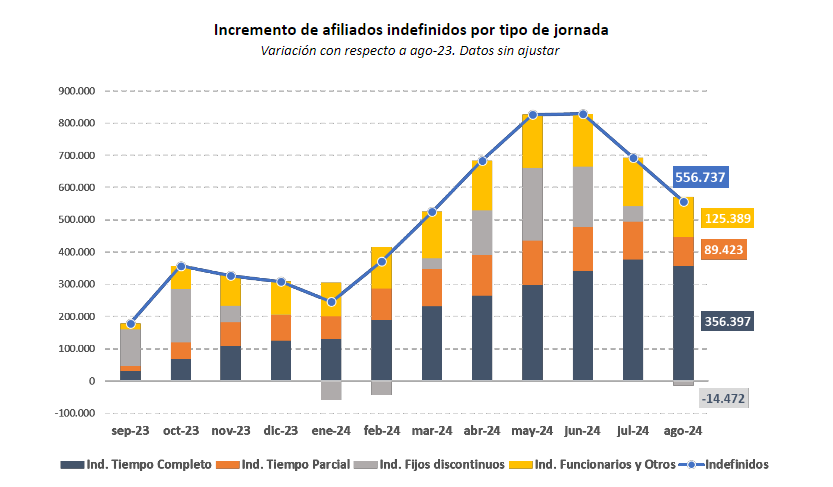
The dynamism of the labour market and the increase in the quality of employment is helping to strengthen the sustainability of the pension system, with the ratio of contributors to pensioners now standing at 2.43, the highest level since 2011.
Non official translation








